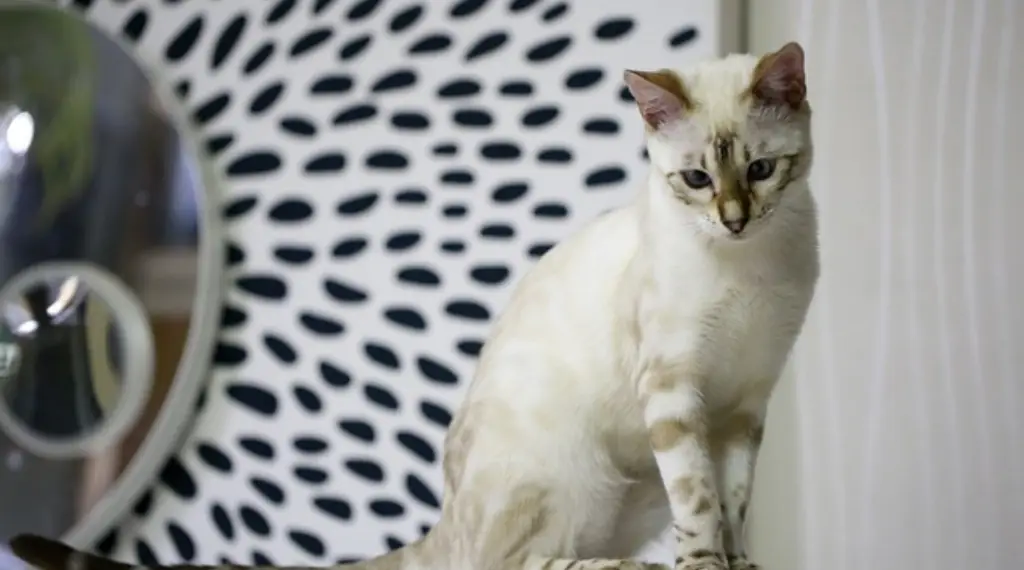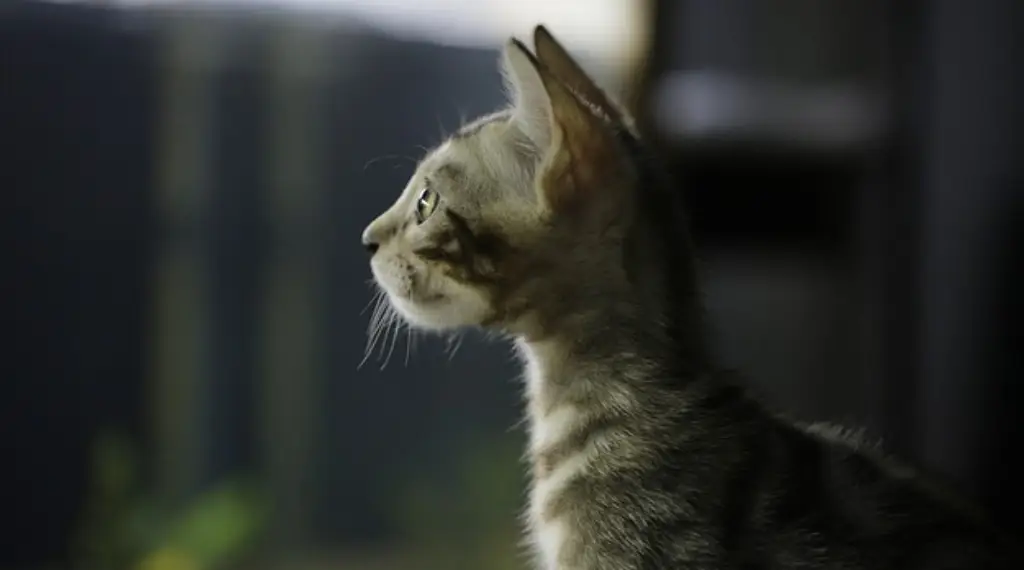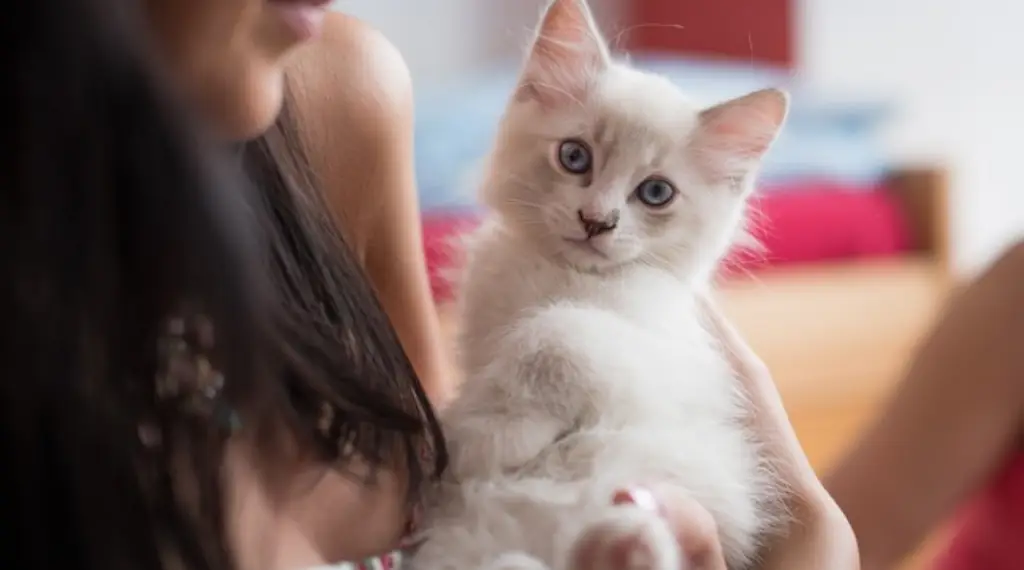If you’re on the hunt for a feline friend who looks straight out of the jungle but behaves like a playful, energetic ball of fur, the Snow Bengal cat is likely to capture your attention.
Known for their striking appearance, unique markings, and lively personality, these cats are favorites among cat lovers who crave a bit of the wild in their home.
Whether you’re considering adopting one or you’re simply curious about what makes this breed so captivating, you’re in the right spot. Let’s unravel everything about the fascinating Snow Bengal, from their captivating looks to their playful antics and what it takes to care for them.
What Exactly Is a Snow Bengal Cat?
The Snow Bengal is a stunning variation of the Bengal breed, born from the crossbreeding of domestic cats and Asian leopards. But what sets these felines apart is their snow-like coat—pale, shimmery, and reminiscent of a winter wonderland.
Snow Bengals typically come in three dazzling shades: seal lynx point, snow mink, and sepia. Each one has its own splash of personality when it comes to coloring.

Physical Characteristics You Won’t Forget
1. Coat Colors That Spark Awe
- Seal Lynx Point: Think of a creamy or white base with darker spots, primarily around their ears, face, legs, and tail. These are the lightest of the bunch and often have icy blue eyes.
- Snow Mink: With a slightly darker, beige undertone, Snow Minks are less frosty but just as dazzling, with a warm glow to their fur.
- Snow Sepia: These cats rock a golden-brown base with bold markings, bringing a touch of the jungle to your living room.
2. Size and Agility
Snow Bengals are medium to large-sized. Males can weigh anywhere from 10 to 15 pounds, and females usually tip the scale between 8 and 12 pounds. Despite their size, they carry a lithe, muscular frame—built for grace, agility, and the occasional high-speed chase through the house when they’re in a playful mood.
3. Eyes and Ears That Mesmerize
Their eyes. Oh, their eyes. Vivid hues of blue or green that seem to peer right through you. Add in those large, rounded ears, and you’ve got a cat that looks like it just stepped out of the wild.
Bursting With Personality: Traits and Temperament
1. High-Energy Playmates
Snow Bengals aren’t your average lounge-on-the-couch kind of cat. They’re packed with energy, constantly looking for an outlet. Whether it’s chasing after toys, climbing to the highest point in your home, or play-hunting with feather wands, these cats need action. They’re like mini athletes, always in motion.
2. Unexpectedly Affectionate
While they may look like tiny leopards ready to stalk through the jungle, Snow Bengals are incredibly affectionate. They love being with their human companions, and you’ll often find them following you around or even greeting you at the door when you come home. They enjoy your company—almost as much as they enjoy climbing everything in sight.
3. Smarter Than the Average Cat
Snow Bengals are sharp, quick-witted, and curious. They’ll figure out how to open drawers, navigate through puzzles, and explore every nook and cranny in your home. They thrive when mentally stimulated, so be prepared to keep their environment engaging. Puzzle toys, climbing trees, and interactive challenges are their bread and butter.
4. Communicators With Soft Voices
They may not be chatty like some other breeds, but Snow Bengals do communicate in their own way. Their voices are soft, melodic even, and they’ll let you know what they want with a variety of sounds. Whether they’re hungry or just want some attention, they’ll find a way to express themselves.

Caring for Your Snow Bengal: More Than Just Good Looks
1. Grooming Without the Fuss
With their short, smooth coat, Snow Bengals are relatively low-maintenance when it comes to grooming. A quick brush here and there helps to remove loose fur, but they aren’t heavy shedders.
You won’t need to worry about frequent baths either, unless they get into something particularly messy (which, with their curious nature, is always a possibility).
2. Feeding Your Snow Leopard
To keep up with their high-energy needs, Snow Bengals require a balanced diet packed with nutrients. High-quality cat food is a must, ensuring they stay healthy, active, and maintain their gorgeous coats. Always have fresh water on hand, as these kitties like to stay hydrated.
3. Keeping an Eye on Their Health
Snow Bengals are generally robust, but like all breeds, they can have some health concerns. Hypertrophic cardiomyopathy (HCM) is one of the most common genetic conditions affecting Bengals, so regular vet visits and health screenings are important. When choosing a Snow Bengal from a breeder, make sure they test for these conditions.
4. Exercise: Keep ‘Em Moving
They’re not just all looks—Snow Bengals are active and need plenty of physical and mental stimulation. Boredom can lead to behavioral issues, so interactive toys, climbing structures, and plenty of playtime are essential.
They thrive in environments where they can run, climb, and explore, so don’t be surprised if you find them on top of your fridge one day!
Where to Find Your Snow Bengal
Thinking of bringing one home? Look for reputable breeders who prioritize the health and socialization of their kittens. Steer clear of sources that don’t provide clear information or skip out on health guarantees.
Reputable breeders will perform genetic testing and give you peace of mind that your new furry friend is coming from a healthy background.
Final Thoughts
The Snow Bengal cat is more than just a pretty face—it’s a dynamic, affectionate, and intelligent companion that brings a touch of the wild into your home.
If you can keep up with their energy and give them the love and attention they need, you’ll find that a Snow Bengal will bring joy, adventure, and a bit of the exotic to your life.
FAQs About Snow Bengal Cats
1. Are Snow Bengal Cats Hypoallergenic?
While no cat is truly hypoallergenic, Snow Bengals are considered less likely to trigger allergies than other breeds. Their short, sleek coat produces less dander, which is often the primary cause of allergic reactions in humans.
However, people with severe allergies may still experience symptoms, so it’s best to spend time around a Snow Bengal before committing to adoption.
2. Do Snow Bengal Cats Get Along with Other Pets?
Yes, Snow Bengals are generally social and can get along well with other pets, including cats and dogs. Early socialization is key, and introducing them to other pets in a controlled, calm environment is important.
Their playful and curious nature often makes them friendly toward other animals, though they may exhibit dominant behaviors at times.
3. How Long Do Snow Bengal Cats Live?
With proper care, Snow Bengals typically live between 12 and 16 years. Regular veterinary check-ups, a balanced diet, and plenty of exercise can help ensure a long, healthy life.
Like any breed, genetics and overall health play a role in their lifespan, so purchasing from a reputable breeder is essential.
4. Are Snow Bengal Cats Good for Families?
Absolutely! Snow Bengals are excellent companions for families. Their affectionate, playful, and social nature makes them great pets for children and adults alike.
However, due to their high energy, they may not be the best fit for very young children or households looking for a laid-back cat. Families who enjoy interactive play and have an active lifestyle will find the Snow Bengal a perfect match.
5. Do Snow Bengal Cats Shed a Lot?
No, Snow Bengals are relatively low-shedding compared to other breeds. Their short, soft coat does shed, but it’s not excessive. Regular brushing helps minimize shedding and keeps their coat in great condition.
However, because they are such active groomers, you’ll likely notice very little loose fur around your home.
6. How Much Does a Snow Bengal Cat Cost?
Snow Bengals can be quite pricey. The cost for a Snow Bengal kitten from a reputable breeder typically ranges between $1,500 to $3,000 depending on the bloodline, coat color, and pattern.
Show-quality Snow Bengals or those with rare markings may even cost more. Be cautious of lower prices, as they may come from breeders who don’t prioritize health and proper socialization.
7. Are Snow Bengal Cats Difficult to Train?
Not at all! Snow Bengals are one of the more trainable cat breeds, thanks to their intelligence and curiosity. They can learn tricks, commands, and even be leash-trained if introduced to it early.
Positive reinforcement techniques, like treats and praise, work best with them. They are quick learners, but their independent streak can sometimes lead to mischief if they’re not mentally stimulated.
8. How Big Do Snow Bengal Cats Get?
Snow Bengals are medium to large cats. Males can weigh between 10 and 15 pounds, while females are typically smaller, weighing between 8 and 12 pounds. Despite their size, they’re sleek and muscular, with an athletic build that’s perfect for climbing and playing.
9. Do Snow Bengal Cats Like Water?
Interestingly, many Snow Bengals enjoy water! Their wild ancestors, Asian Leopard Cats, were known to be proficient swimmers, and some of that affinity for water has been passed down to modern Bengals.
Don’t be surprised if your Snow Bengal splashes in the sink or enjoys a little time in shallow water. Of course, not every Snow Bengal will love water, but the trait is common in the breed.
10. Are Snow Bengal Cats Aggressive?
No, Snow Bengals are not naturally aggressive. They may exhibit wild-like behaviors such as pouncing or playful biting due to their high energy, but these behaviors are rarely mean-spirited.
If properly socialized and raised in a loving environment, they tend to be affectionate and gentle. Providing them with ample exercise and mental stimulation can help curb any unwanted behavior.
Final Note on Snow Bengals and FAQs
If you’re considering a Snow Bengal or just curious about this striking breed, understanding their nature and needs will help you build a stronger bond with them.
They’re unique, from their love of play to their wild-looking coats, but they’re also gentle, affectionate companions that thrive in the right environment.


